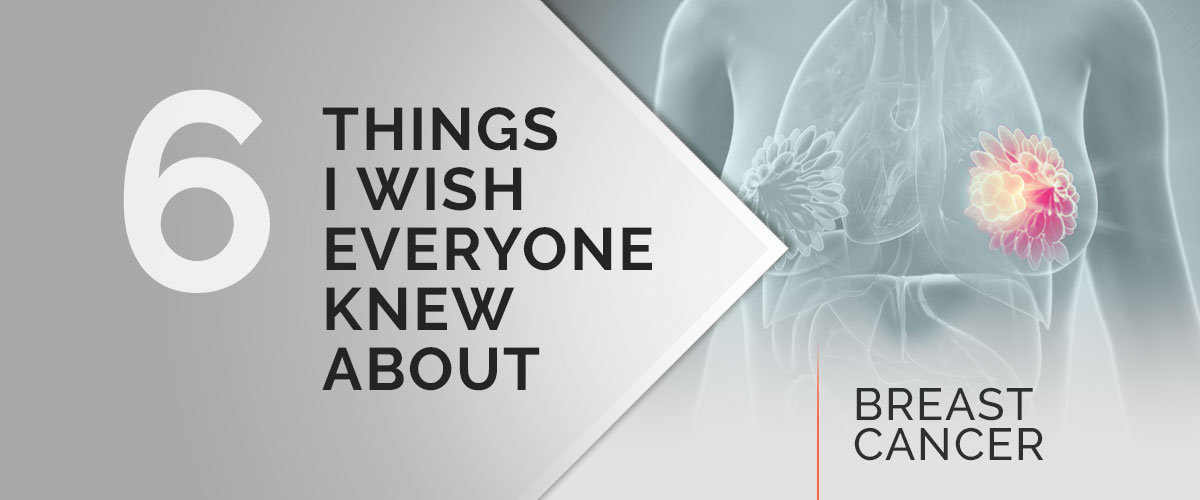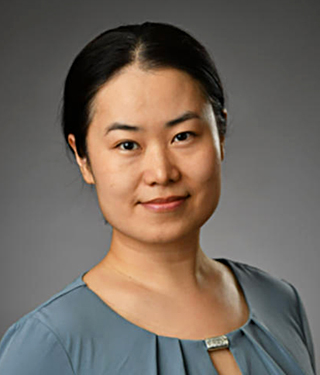6 Facts Everyone Should Know About Breast Cancer
A breast surgeon explains the new recommendation for regular mammogram screenings starting at age 40, advanced treatment options, and why early detection is so important.

About one in eight women will develop breast cancer in their lifetime, according to the American Cancer Society, making breast cancer the most common cancer in women, aside from skin cancers.
While the prevalence of breast cancer is high in the United States, the survival rate is equally high — 90% of patients beat the cancer. A big key is catching it early. Recently, the United States Preventive Services Task Force took a significant step toward encouraging early detection when it changed its guidelines to recommend that women get mammograms starting at age 40 instead of 50.
“The new recommendation is based on new research showing that more women are being diagnosed with cancer at earlier ages,” says Dr. Luona Sun, a breast surgeon at NewYork-Presbyterian/Columbia University Irving Medical Center and assistant professor of surgery at Columbia University Vagelos College of Physicians and Surgeons.
But Dr. Sun says that if you are diagnosed early and follow through with proper treatments, the prognosis is actually very good. “I tell my patients, don’t be scared of the diagnosis itself, but fully recognize the facts and proactively participate in your treatments.”
Health Matters spoke with Dr. Sun to get the facts about breast cancer and understand why early detection is so important for fighting—and beating—breast cancer. Here are six facts she wants people to know.
Fact #1: Earlier diagnosis means better prognosis.
When breast cancer is caught early, there is a much better outcome. “Thanks to greater awareness and more advanced exams and screenings, breast cancer can be caught at an earlier stage,” says Dr. Sun. “That is why a majority of patients with breast cancer have a very good prognosis.”
Dr. Sun adds that knowing your risk status is the most important first step. This means having a consultation with your doctor to determine your risk. It could also include genetic testing —if the patient is comfortable with it and wishes to do so—and a full family history evaluation. Based on a person’s risk level and their age, doctors can then map out a personalized screening plan moving forward.
For patients who don’t find the cancer early, they run the risk of metastatic breast cancer—when breast cancer has spread to another area of the body such as the lymph nodes or the lungs. “Once the cancer spreads to another organ in the body, treatment becomes more complicated,” says Dr. Sun. “That is why early detection is so crucial. That being said, we have seen that treatments do improve over time, so it is important to stay hopeful.”

Dr. Luona Sun
Fact #2: Screenings should begin at age 40.
The Task Force newly recommends a mammogram starting at age 40. “The updated screening guidelines are well accepted by the American College of Surgeons and the American College of Obstetricians and Gynecologists,” says Dr. Sun. “Women should start mammograms at age 40.”
One of the factors that a mammogram can detect is dense breast tissue, which is when there is more fibrous or glandular tissue than fat in breasts. According to the Centers for Disease Control and Prevention, dense breast tissue is linked to a higher risk of getting breast cancer. Scientists don’t know for sure why this is true, but thorough screening remains important. “Density makes the usual imaging detection harder to find a mass or abnormality,” says Dr. Sun. “A breast ultrasound in addition to a mammogram is a good idea.”
Adds Dr. Sun: “Women with a higher-than-average risk of breast cancer should undergo annual mammograms and be offered yearly supplemental imaging; this screening should be initiated at a risk-based age.”
Dr. Sun also emphasizes the importance of practicing breast self-awareness long before 40. “Be familiar with your breasts and aware of any changes,” she says. “Know when to alert your doctor.”
Fact #3: For people with high risk, screenings should begin much earlier.
Those with a high risk of breast cancer should be screened with a breast MRI and a mammogram every year, typically beginning at age 30. This includes people who:
- Personal history of breast cancer.
- Have a known BRCA1 or BRCA2 gene mutation (through a genetic test).
- Have a first-degree relative (parent, sibling, or child) with a BRCA1 or BRCA2 gene mutation and have not had genetic testing themselves.
- Had radiation therapy to the chest when they were between 10 and 30 years old.
- Have Li-Fraumeni syndrome, Cowden syndrome, or Bannayan-Riley-Ruvalcaba syndrome, or have first-degree relatives with any of these syndromes.
Black women are 40% more likely to die of breast cancer than white women and often get deadly cancers at younger ages, the Task Force stated in their recommendation. New studies have shown that they may want to consider screening earlier than 40.
Fact #4: A full mastectomy is not the only treatment option.
According to Dr. Sun, there are many newer procedures now available to treat breast cancer compared to several decades ago. There are other options to explore than the full removal of the breast(s).
“We have newer breast conserving options now like partial mastectomy, lumpectomy (a procedure which removes the cancer while sparing as much of the healthy breast and breast tissue as possible), nipple-sparing mastectomy, and skin-sparing mastectomy,” says Dr. Sun. “There are also breast reconstruction procedures that can happen at the same time when the breast(s) are removed.”
In addition to more advanced surgical options, researchers are developing new drugs with very promising results. For instance, certain estrogen-blocking drugs, which are typically used to help treat breast cancer, might also help prevent it. “This kind of drug treatment is for a patient who does not have a diagnosis of cancer, but has been deemed as a high risk,” adds Dr. Sun.
Fact #5: Breast cancer does not just affect people assigned female at birth.
Though the risk is higher for women, “we have male patients who are also suffering from breast disease,” says Dr. Sun. “Because people tend to consider it as a ‘female cancer,’ diagnosis and treatment in men is often delayed. So, it is important that you don’t overlook men’s risks.” According to the American Cancer Society, for men, the lifetime risk of getting breast cancer is about 1 in 833.
Fact #6: You can lower your risk of breast cancer.
Regular screenings appropriate for your risk level is the number one way to reduce your risk of breast cancer. Other ways to lower your risk are:
- Maintain a healthy weight. Data show that weight gain as an adult is linked with a higher rate of breast cancer.
- Exercise regularly.
- Reduce alcohol consumption. For women who do drink, they should have no more than 1 alcoholic drink a day, states the American Cancer Society, but it is best not to drink alcohol at all.
Learn more about breast cancer care at NewYork-Presbyterian.
Luona Sun, M.D. , is a board-certified breast surgeon at NewYork-Presbyterian/Columbia University Irving Medical Center and an assistant professor of surgery at Columbia University Vagelos College of Physicians and Surgeons. She is trained in minimally invasive nipple sparing mastectomy, skin sparing mastectomy, intraoperative radiation therapy, and various frontline localization skills. Dr. Sun is also an active researcher, focusing on rare diagnoses like small cell carcinoma in breast cancer and high-risk lesion management in patients with coexisting cancer. One of her major research interests is in Asian American breast cancer disparities.

